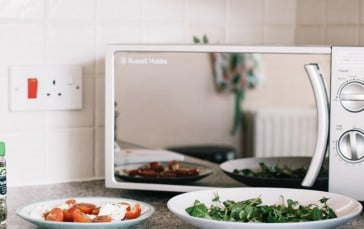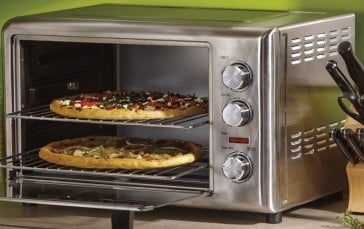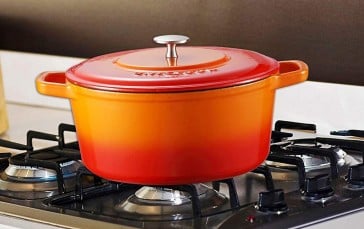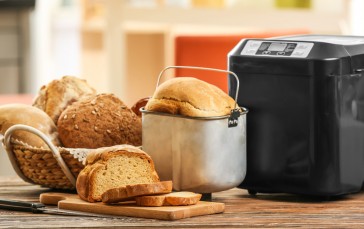Food You Should Never Microwave
There’s no doubting that the introduction of the microwave oven has made life a little easier. The microwave oven entered the world in the mid-1940’s and although many super heavy and expensive models popped up over a few decades, it wasn’t until the 1980’s that the commercial appeal of the microwave oven really took off.
The most convenient aspect of the microwave is reheating food and beverages. What used to take 20 to 30 minutes in the oven or on the top of the stove, can be done in minutes in the microwave. There are also so many things you can cook in the microwave, and although it can take a little time to get the hang of microwave cooking, it’s certainly worth the effort if you work long hours and want a home-cooked meal at the end of the day.
Before you rush to the kitchen to get dinner started in your microwave it’s important to know what you can and can’t cook in this timesaving appliance. Here are 10 foods you should never microwave.
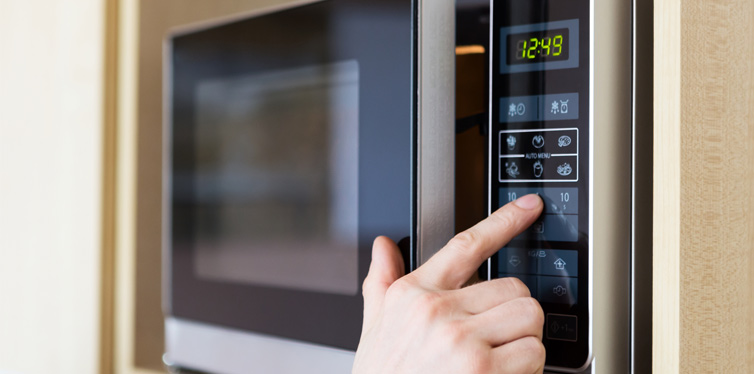
1. Chili Peppers
Technically, there is nothing dangerous about microwaving chili peppers. They taste great in a variety of dishes and they are incredibly versatile. However, one thing you should be cautious of is that although these spicy morsels may not explode in the microwave, the capsaicin will release fumes when the peppers become hot, as they will in a microwave. Capsaicin is the substance in peppers that determines how spicy they are and when heated rapidly, they release fumes so opening the microwave at this point will give you a pepper spray blast that will sting your nose and eyes.
2. Whole Eggs
When we talk about microwaving whole eggs, it’s usually fine to microwave the whites and the yolks. However, don’t try to microwave eggs while they are still in the shells. The inside of the egg can heat to very high temperatures and the moisture inside the egg produces a lot of steam. In a closed shell, this steam builds up and with nowhere to go, the egg can explode. Not only is this terribly messy, but if it explodes with the door of the microwave open, the exploding egg has the potential to burn anyone it comes into contact with.
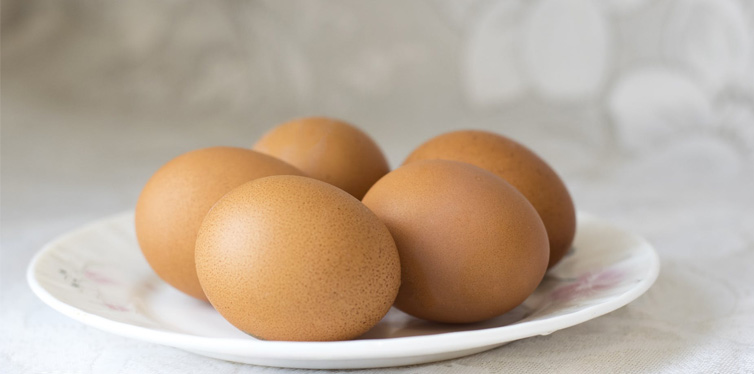
3. Grapes & Other Types Of Fruit
Many people like to microwave different fruits for desserts and usually, it shouldn’t pose a problem. Grapes are an exception though, and should not be microwaved. The high sugar content can actually ignite and the jelly-like consistency of the grapes can turn them into fiery bullets. While you can incorporate them into a number of dishes if they are cut, it’s probably best not to microwave them anyway.
4. Frozen Meat
If you’ve ever tried to defrost meat in the microwave you have probably seen that it doesn’t really thaw out. Instead, it starts to cook unevenly. This results in your meat having frozen and cooked spots of varying temperatures. Not only is this unsightly and unappetizing, but it also creates the perfect breeding ground for bacteria to grow.
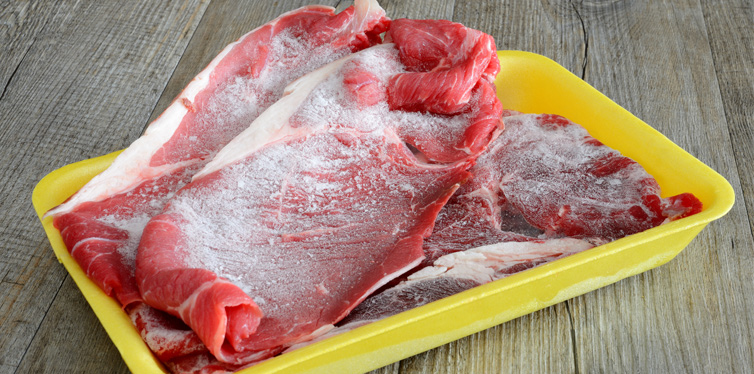
5. Yesterday’s Potatoes
We all love to re-heat leftovers in the microwave and those creamy au gratin potatoes always seem to taste better the next day. While there is nothing wrong with reheating those creamy spuds, think about the cooling process. Did you leave them out on the kitchen counter to cool to room temperature before you put them in the refrigerator or did you place them in the cooler while they were still relatively warm or hot? If you let them cool for too long at room temperature, there is a chance that your potatoes have a dose of botulism in them. The microwave has no effect on this toxin so if you didn’t store the leftovers yourself with caution, it’s best to toss them out.
6. Cooked Mushrooms
We all know the health benefits of mushrooms, but you need to be super cautious when cooking them as they can harbor and grow microorganisms in a flash. If you are planning on having leftovers, make sure you refrigerate them as soon as possible after cooking. If you can eat them cold the next day, all the better but only reheat them in the microwave if you stored them correctly right after cooking.
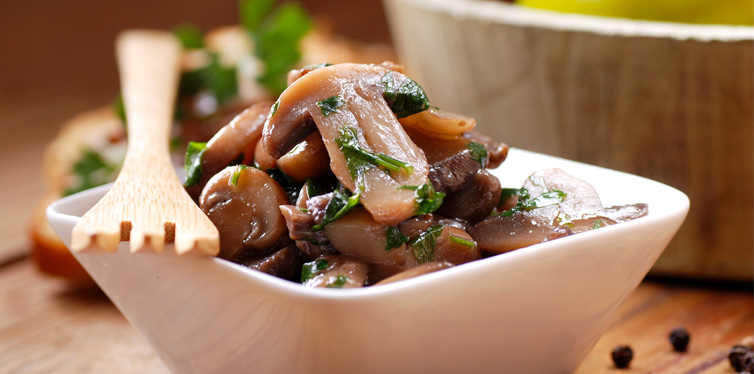
7. Processed Meats
Things like hot dogs and other processed meats should never go in the microwave. These small goods are often packed with a chemical cocktail of additives and preservatives that can make an already not-so-healthy food even worse as the microwaves can cause cholesterol to oxidize. Over time, this can increase your risk of heart diseases. Stick to the stovetop for this one.
8. Uncooked Rice
Rice is very porous and there could be a lot of hidden pathogens and spores in uncooked rice. While boiling or cooking rice on the stove eliminates any fungus or bacteria, microwaving does not. It’s better to stick to old-school rice cookers for your stir-fry and risotto dishes.
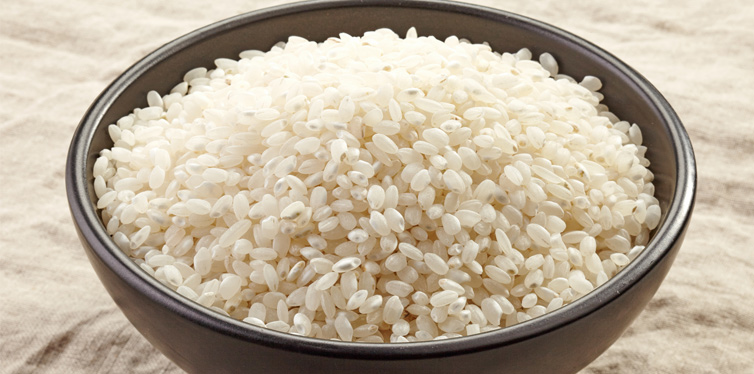
9. Bread
That slightly stale bread roll tastes soft and squishy after a few seconds in the microwave, right? That warm softens is only temporary and once the bread starts to cool it you’ll have turned bread to a stone. The heat from the microwave changes the gluten, starch and sugar molecules and the bread hardens fast as it cools.
10. Any Food That Has Already Been Reheated
Most leftover dishes can be stored in the fridge for a few days and reheated. The problem is when that same dish of leftovers is reheated a few times. Each time the food is reheated it becomes a petri dish of growing bacteria and the texture and taste of the food deteriorates with each warming. You should avoid reheating food more than once regardless of the reheating method, but studies have shown that doing so in the microwave is actually a lot worse because the heating process is uneven meaning the bacteria can grow even faster.
If you’re not sure about cooking or reheating in the microwave, it’s better to stick to cooking as your grandmother did.


